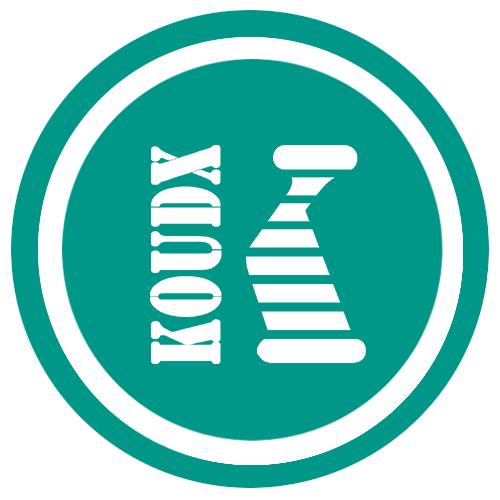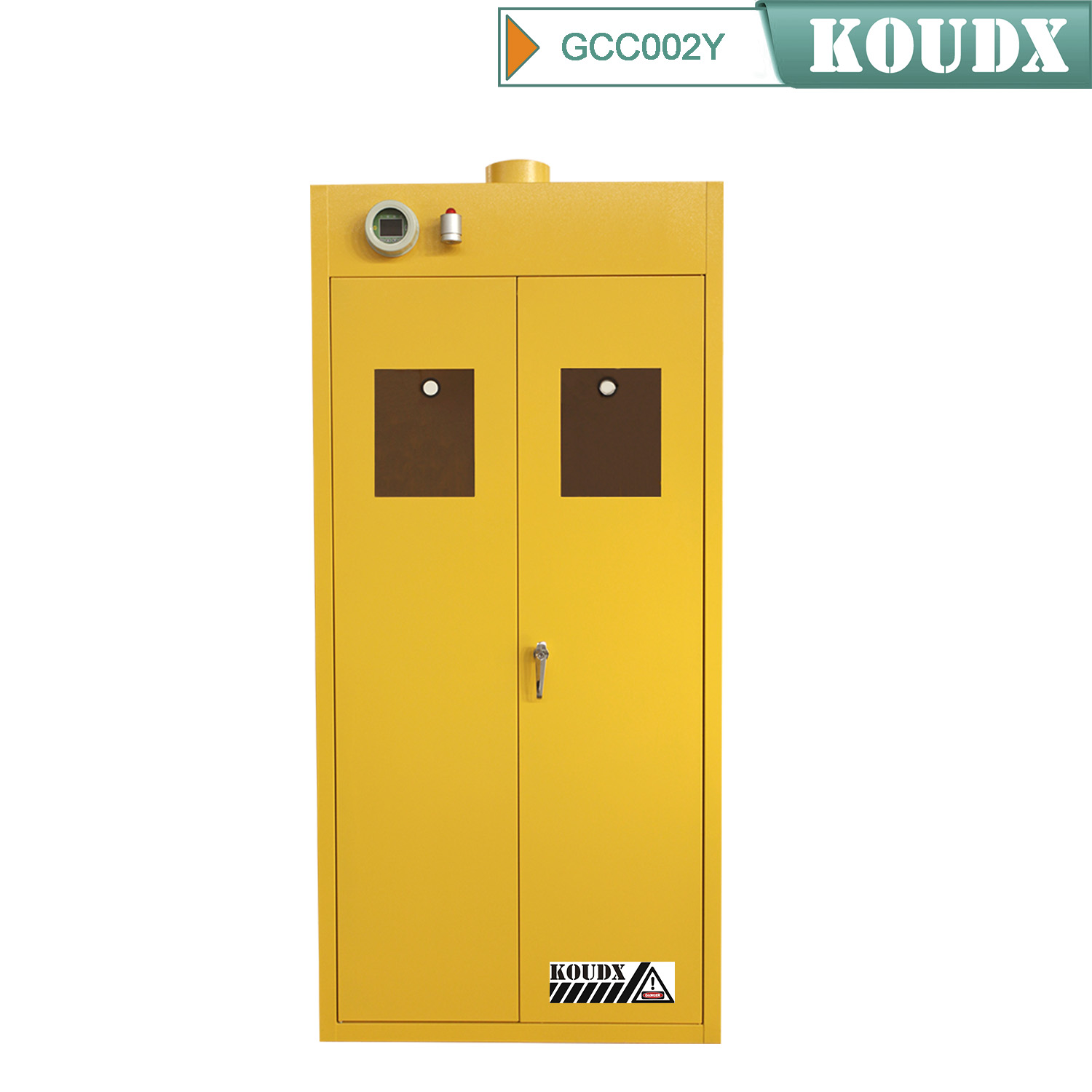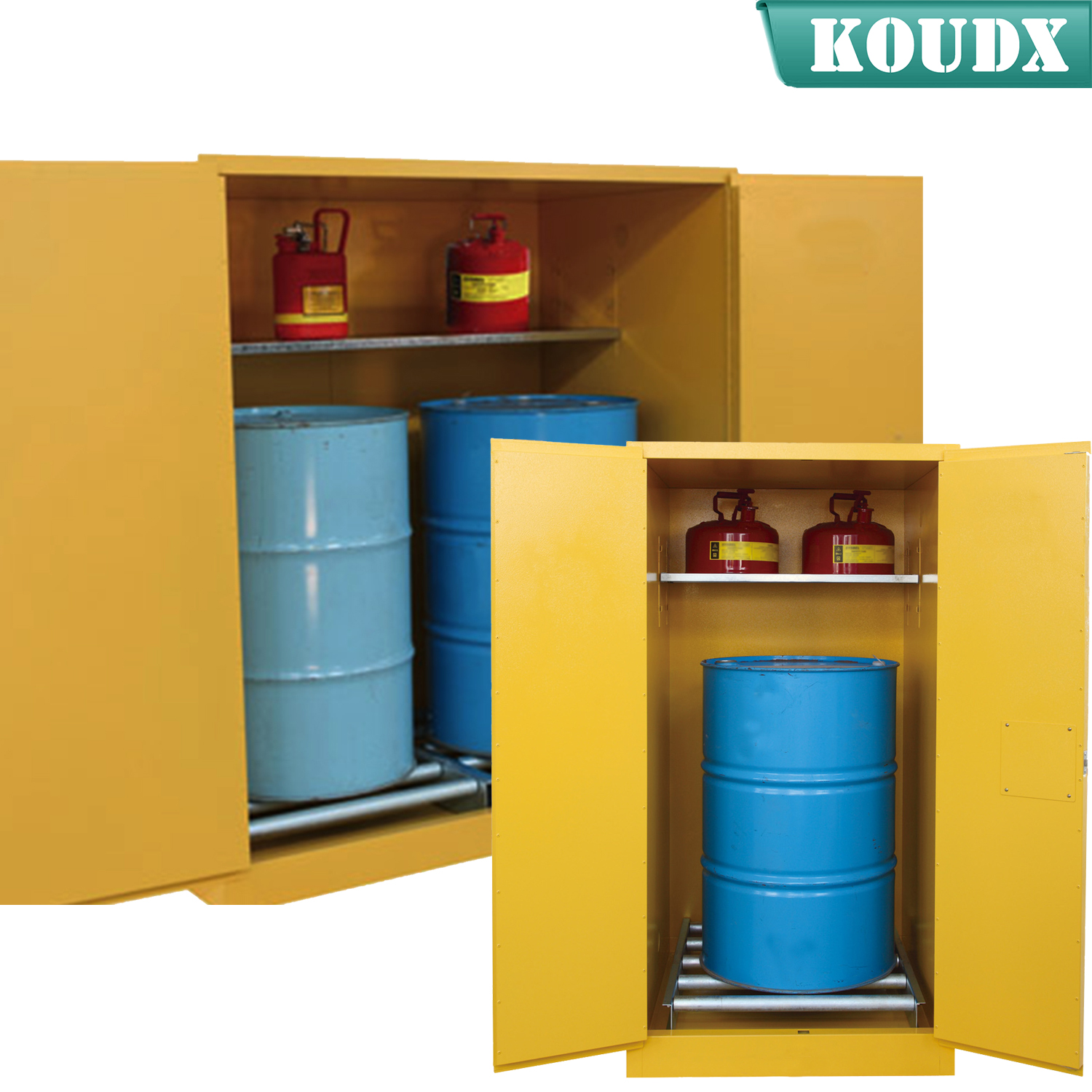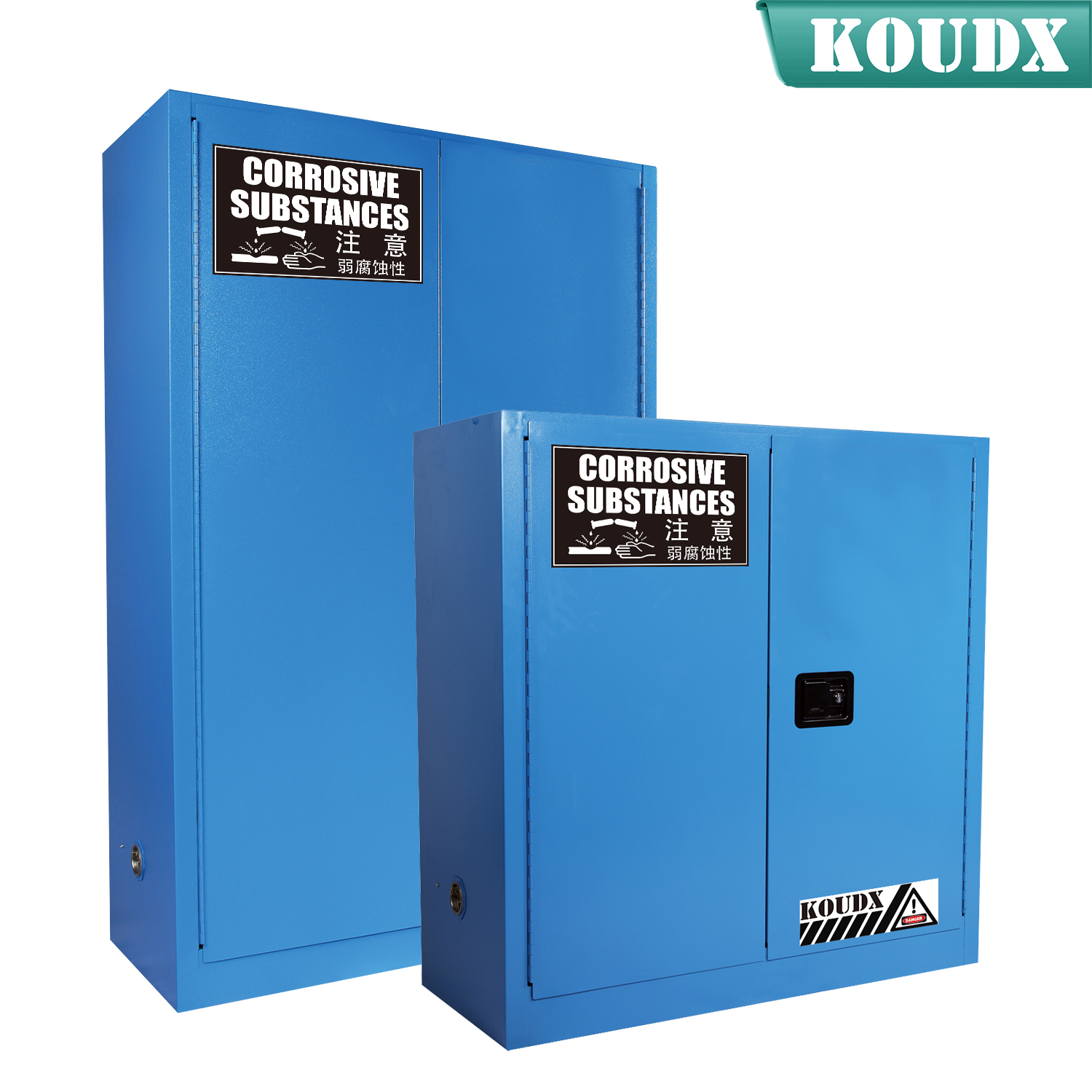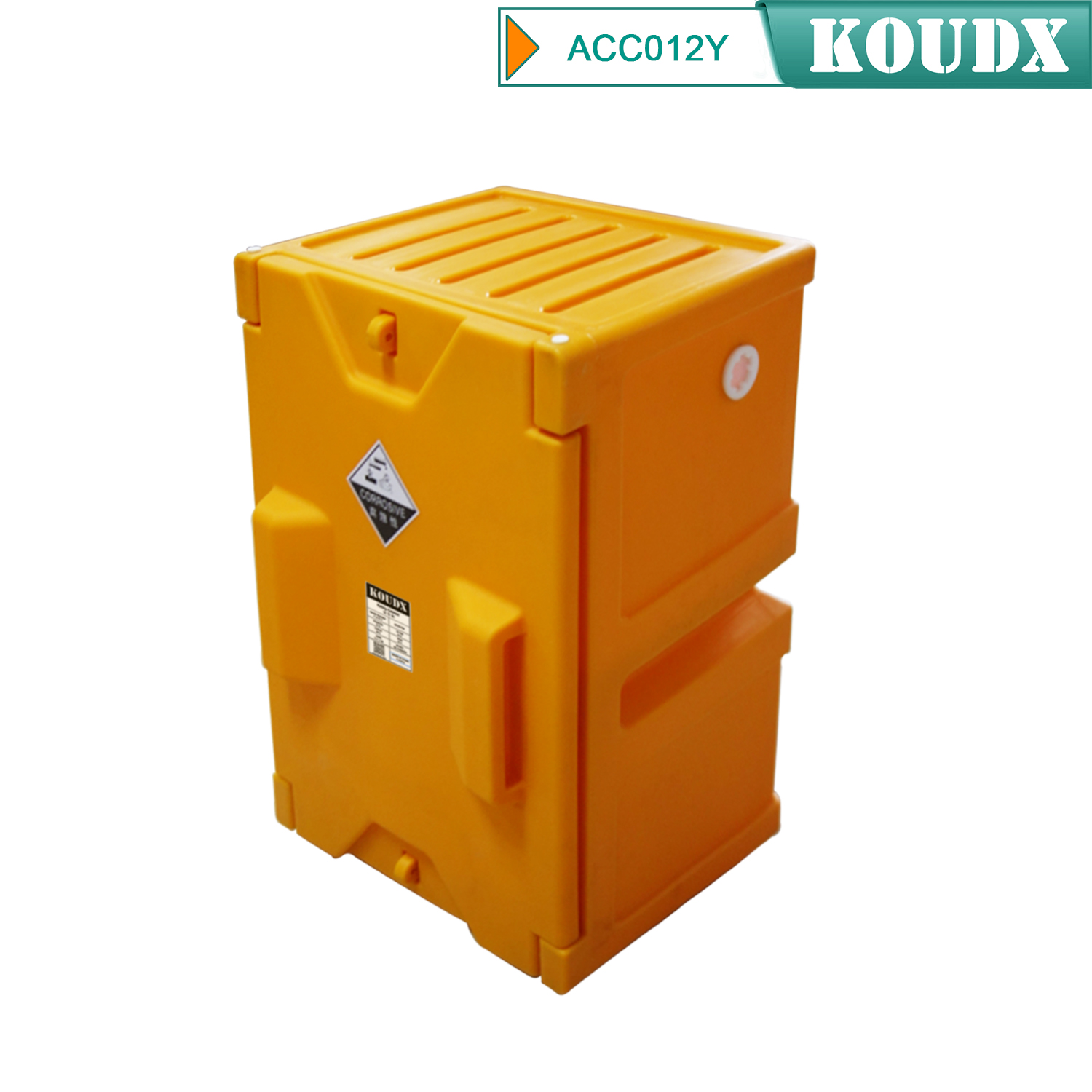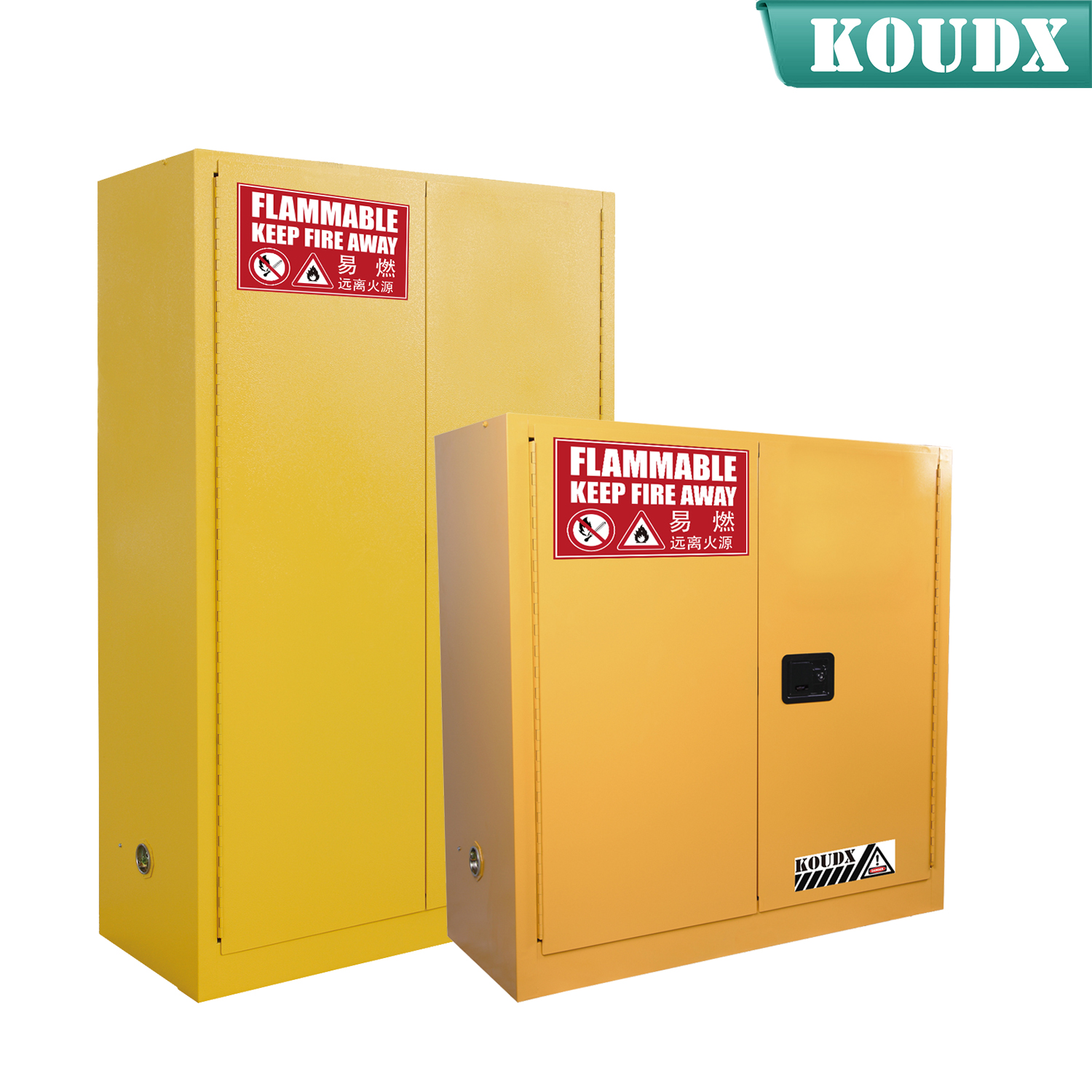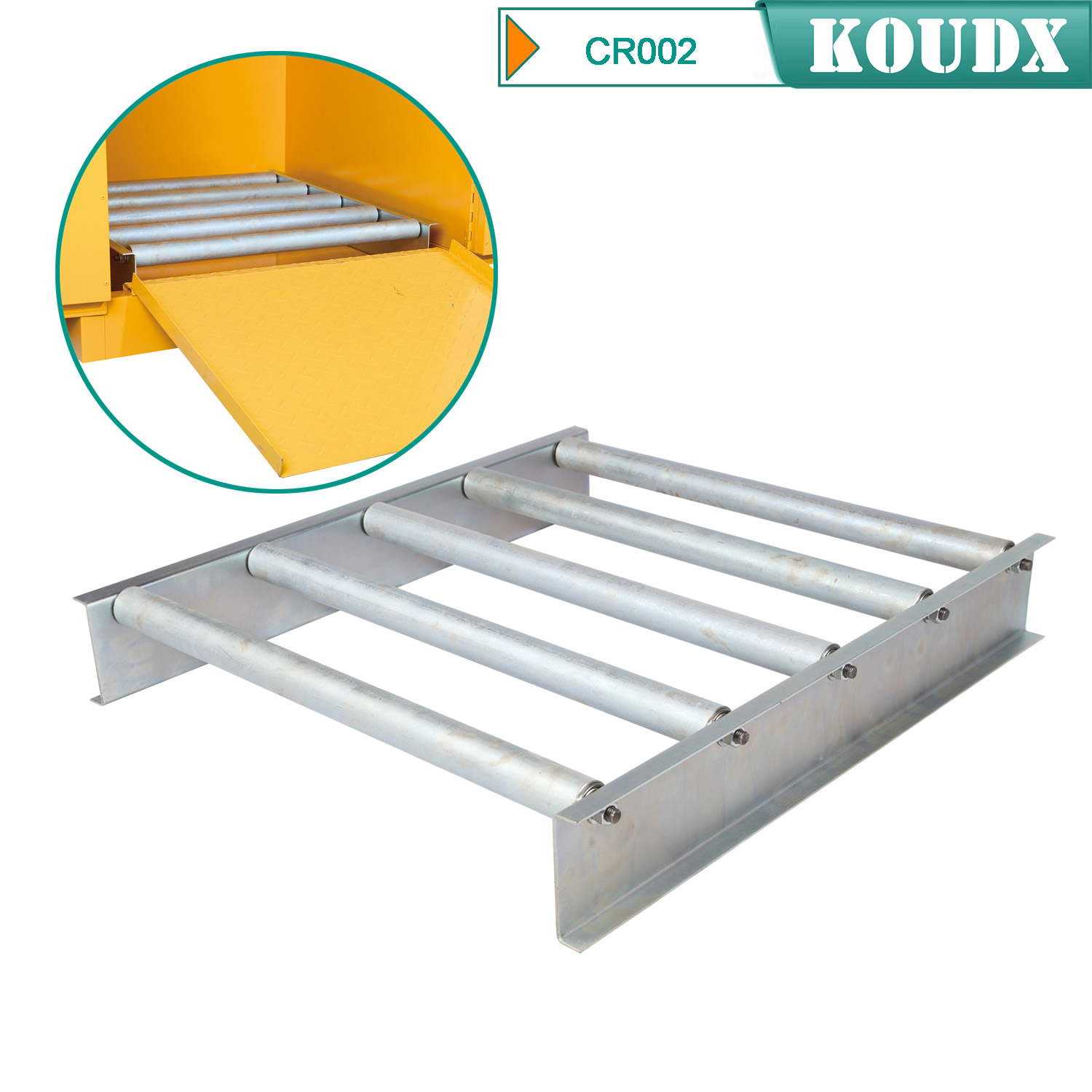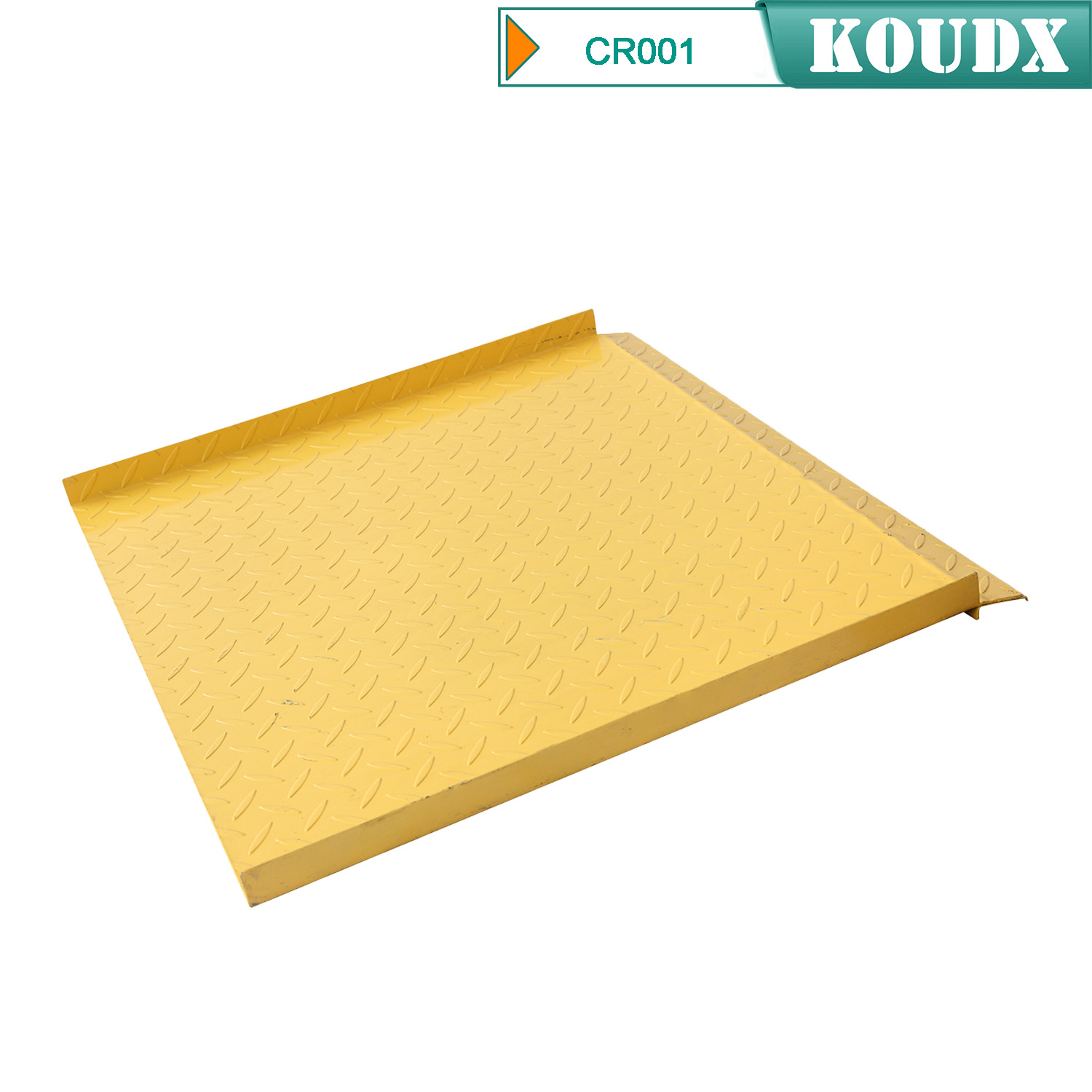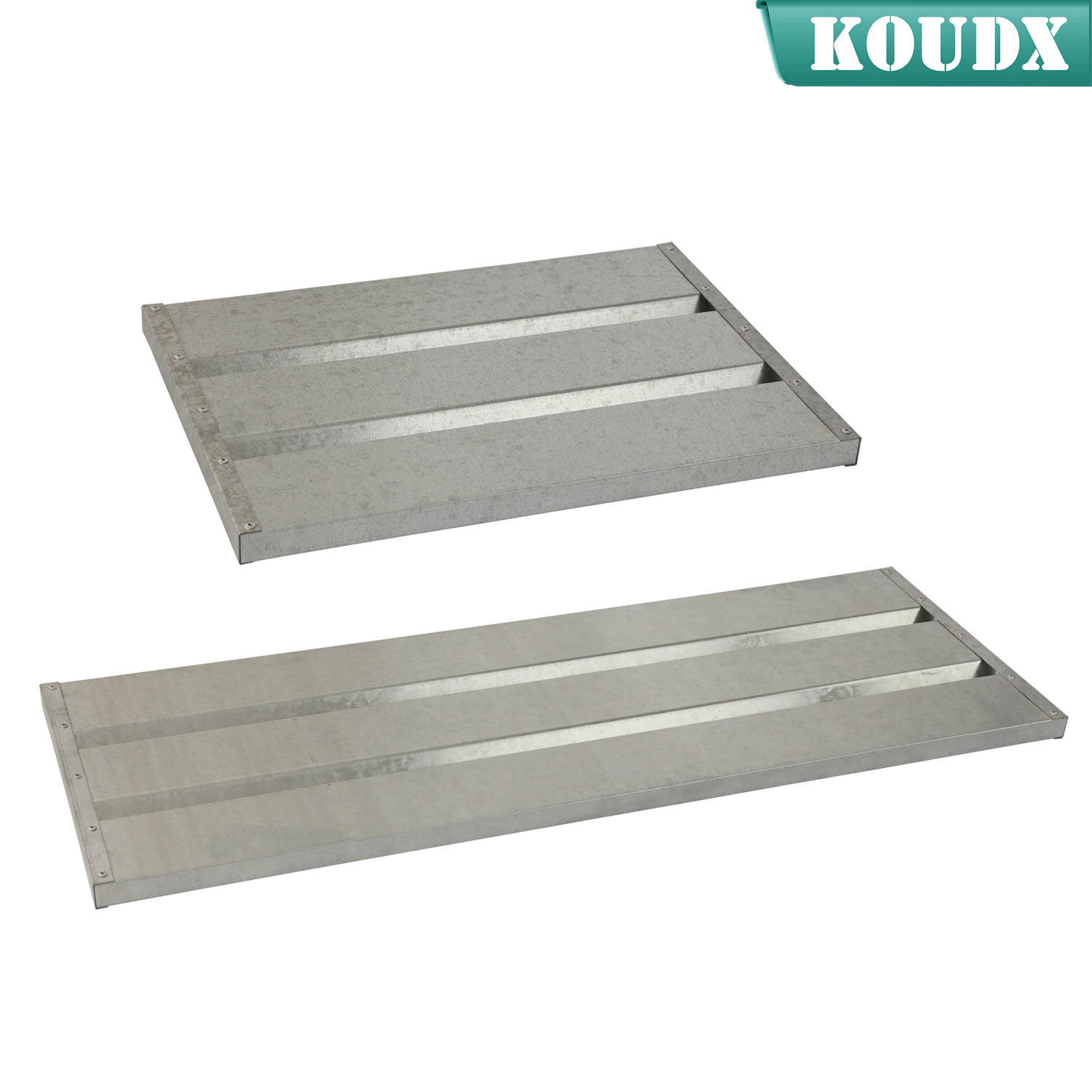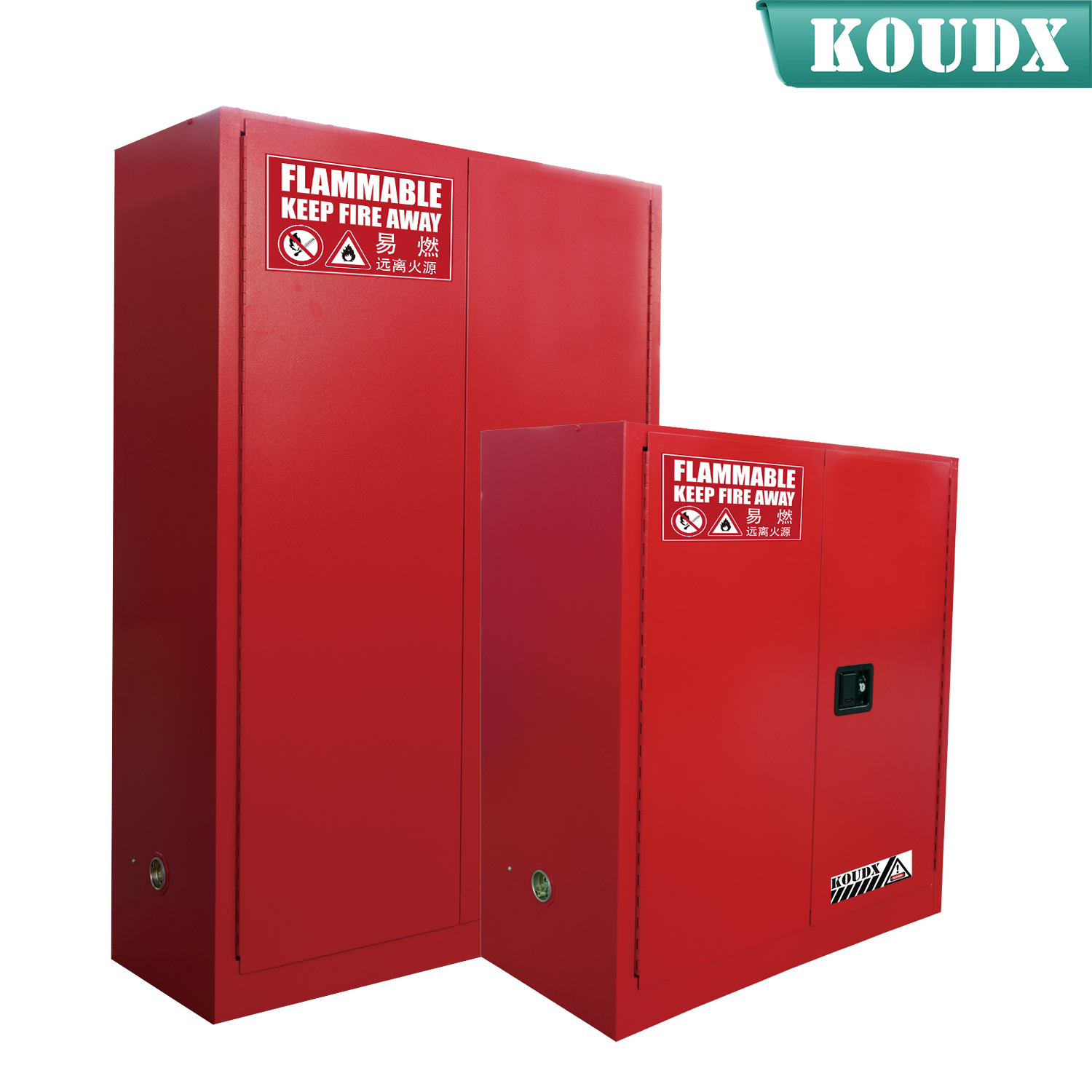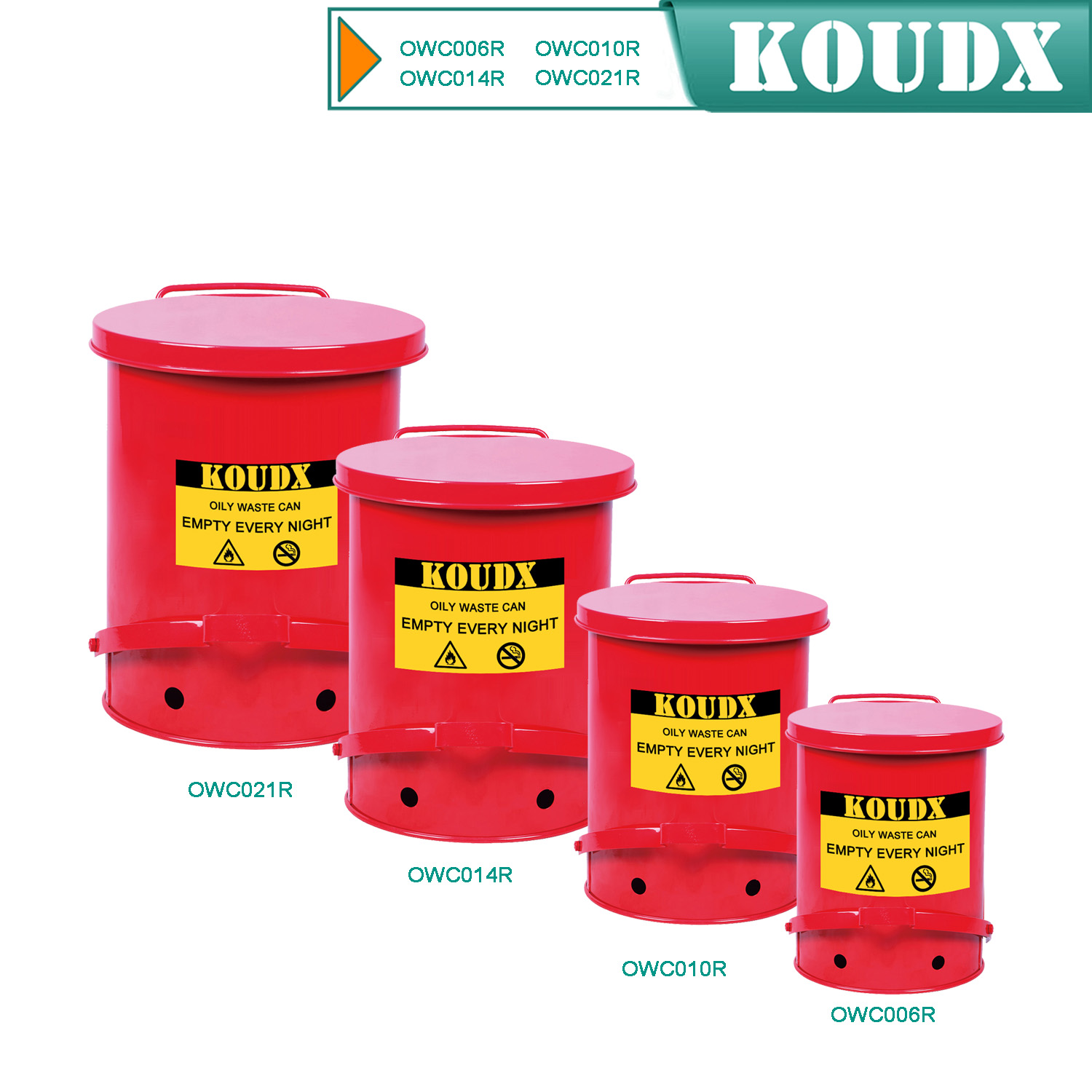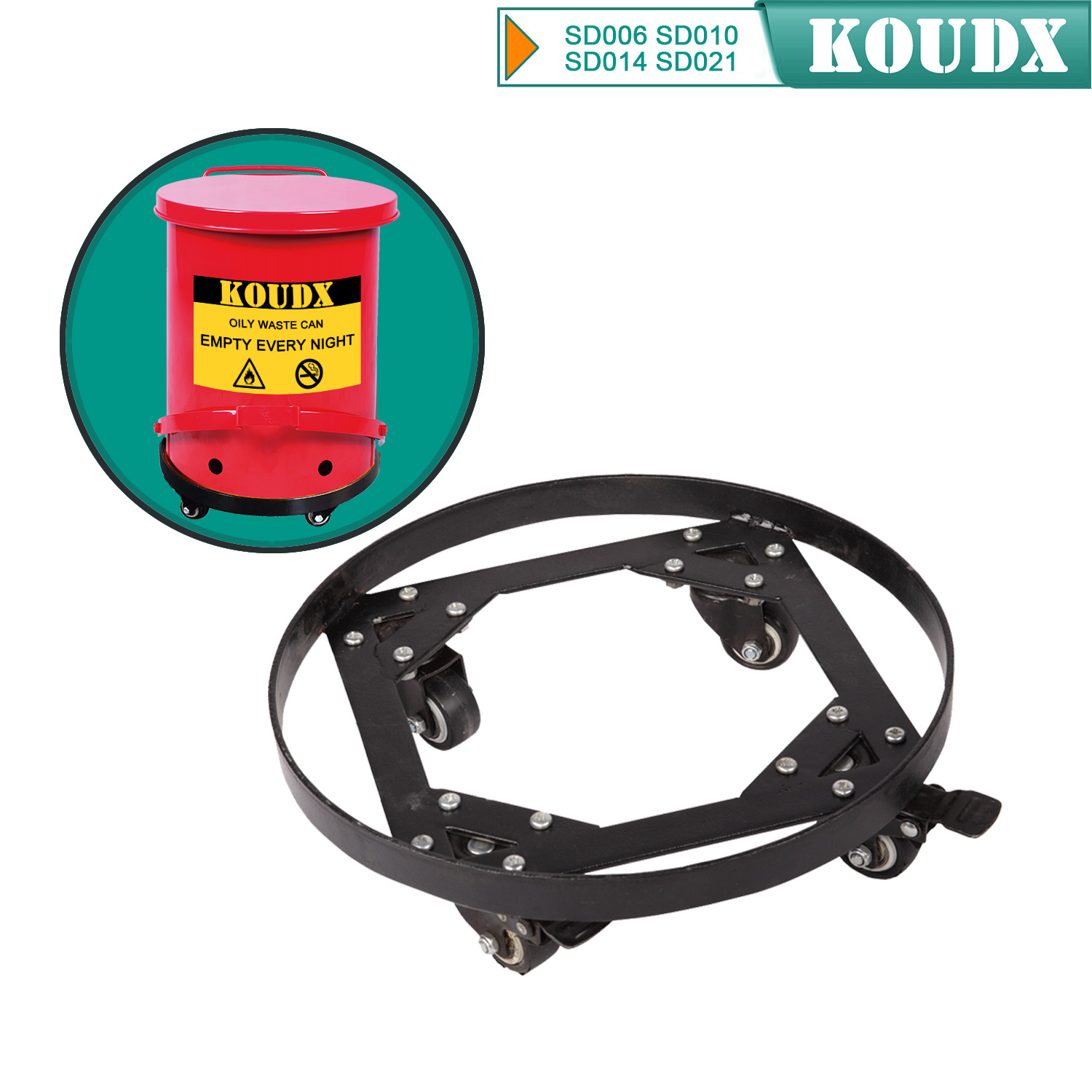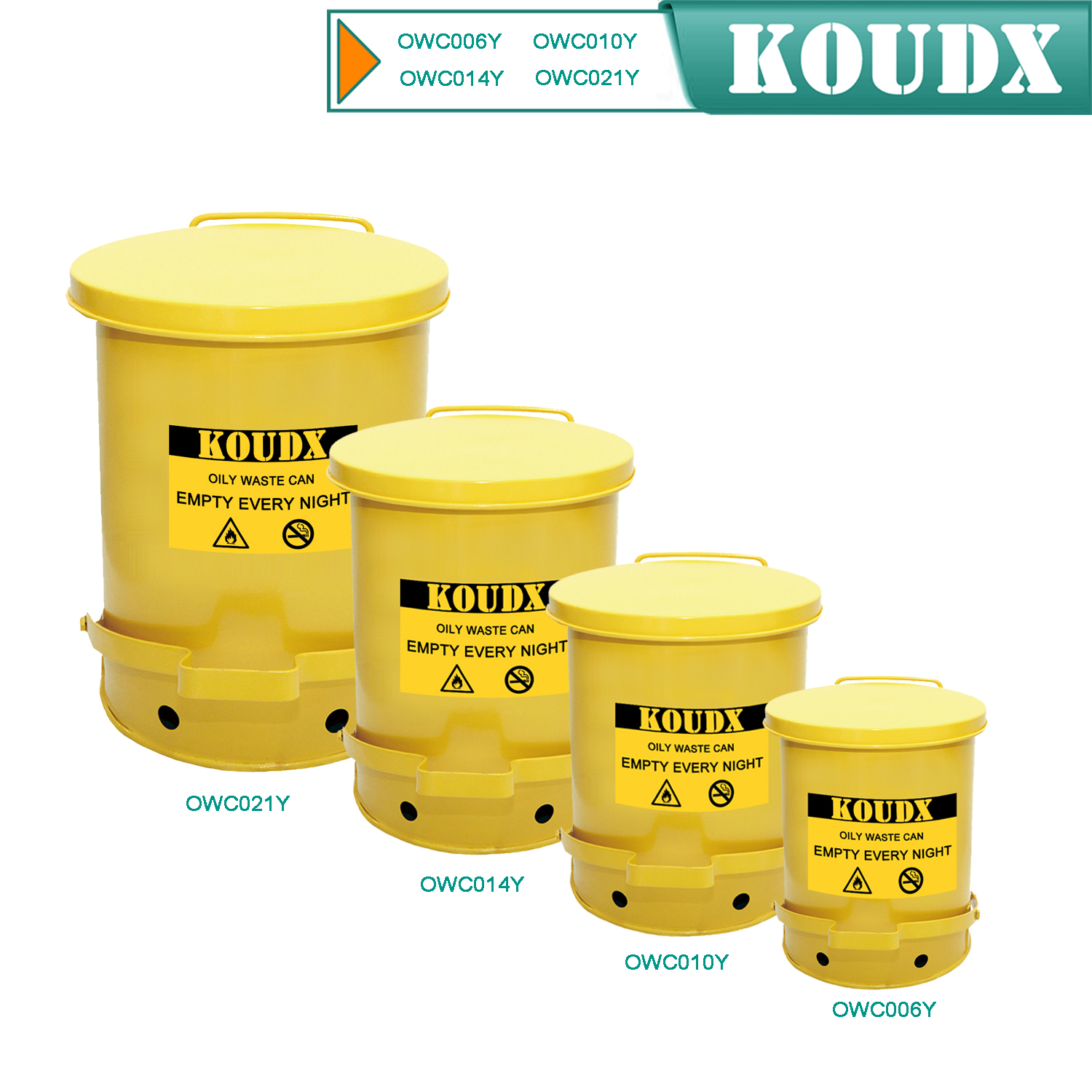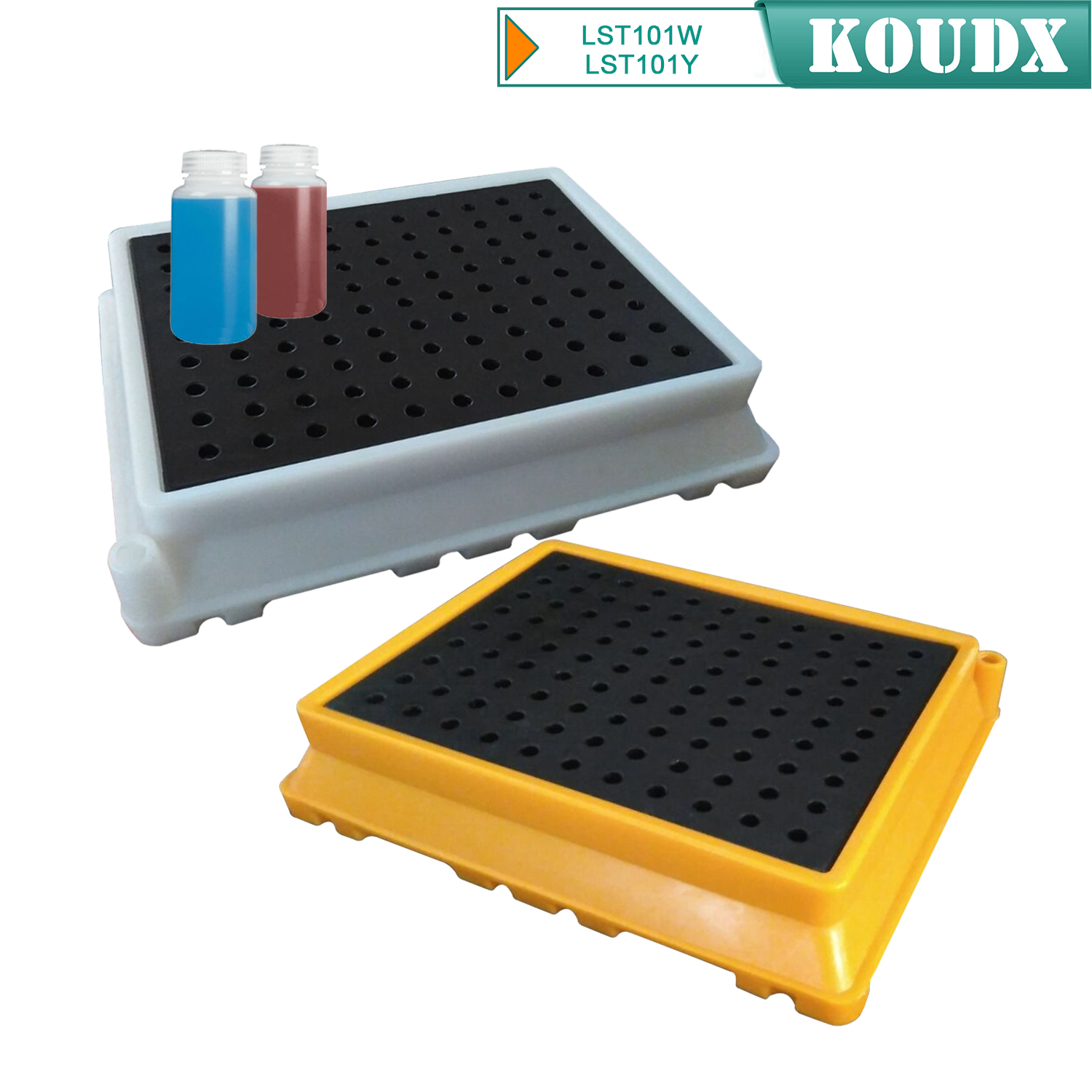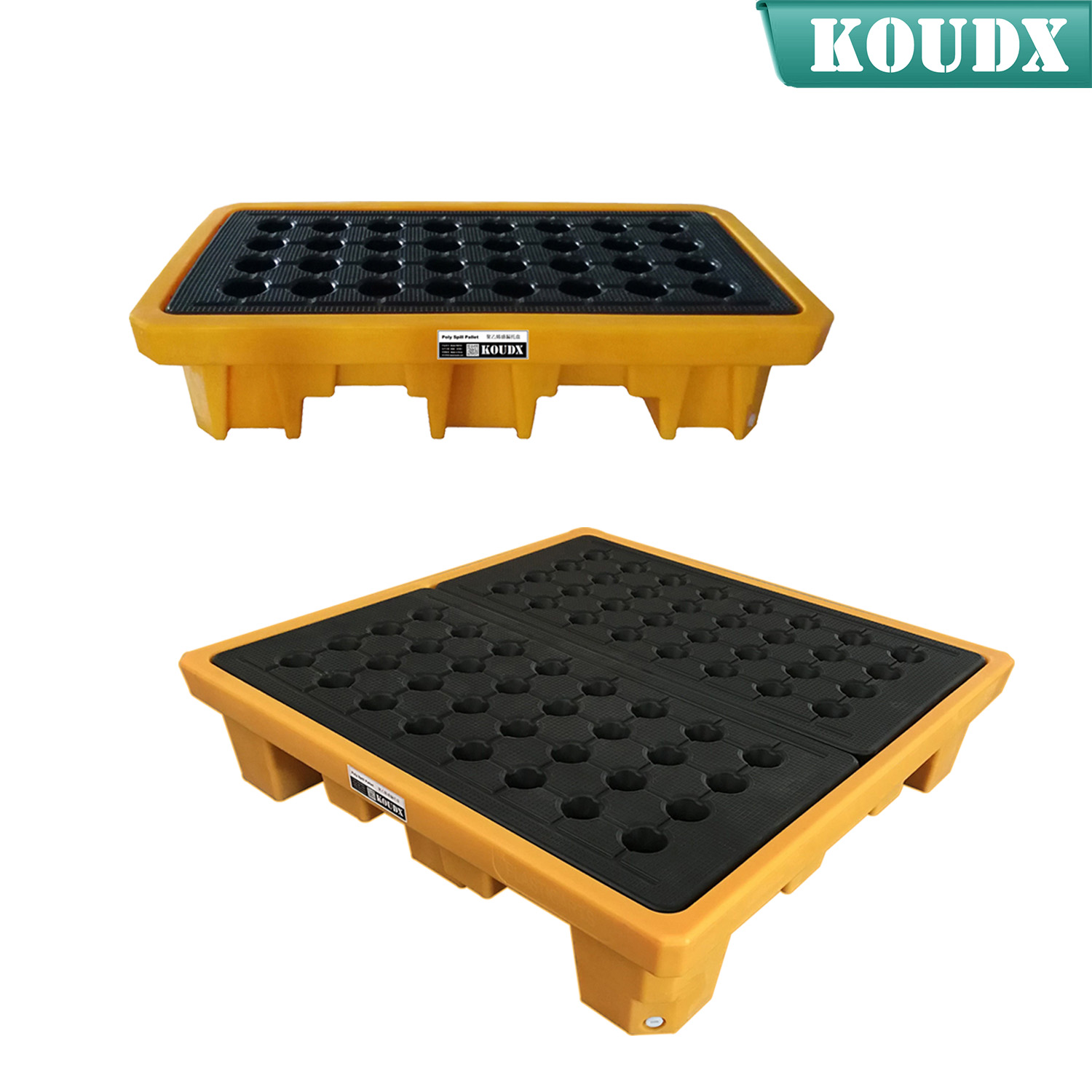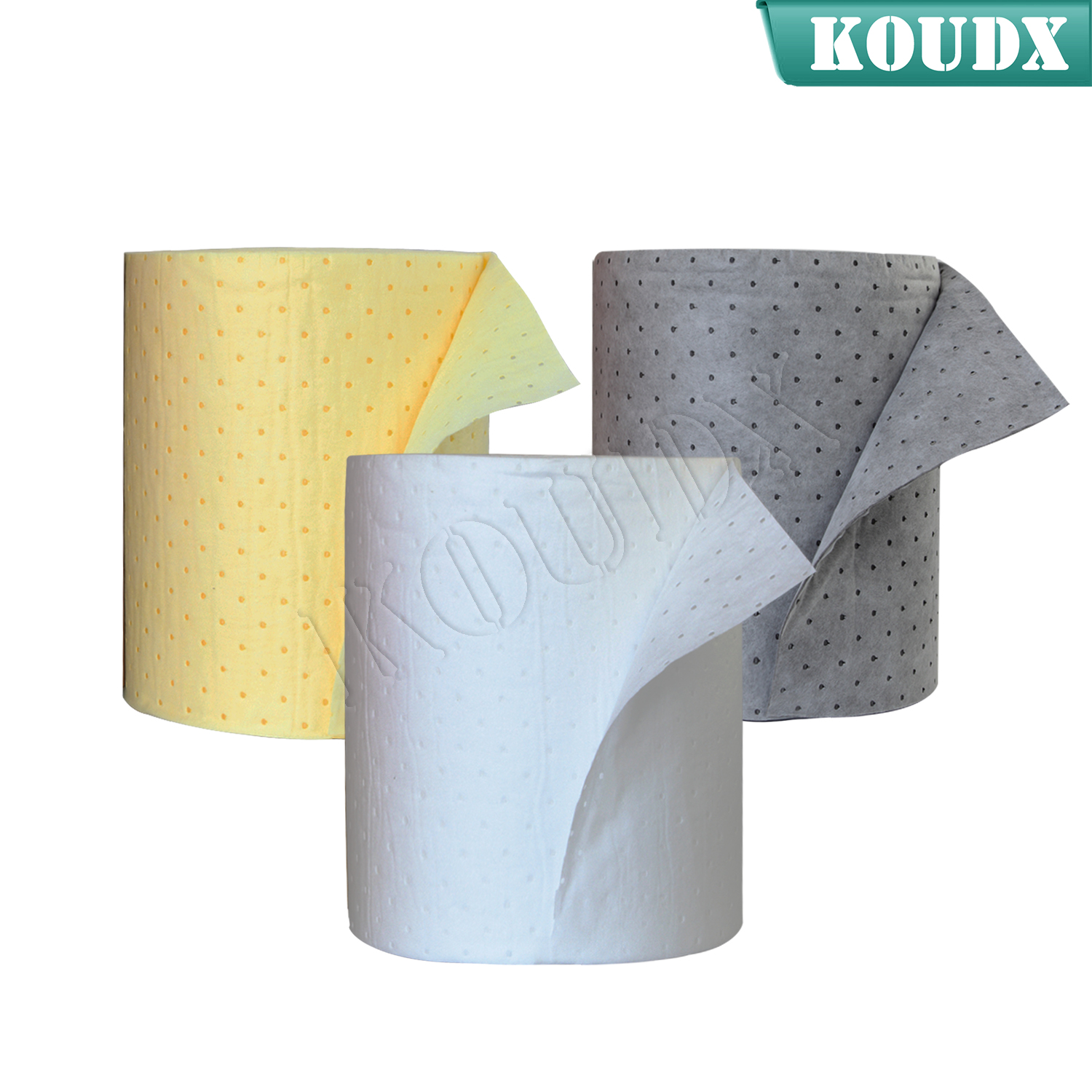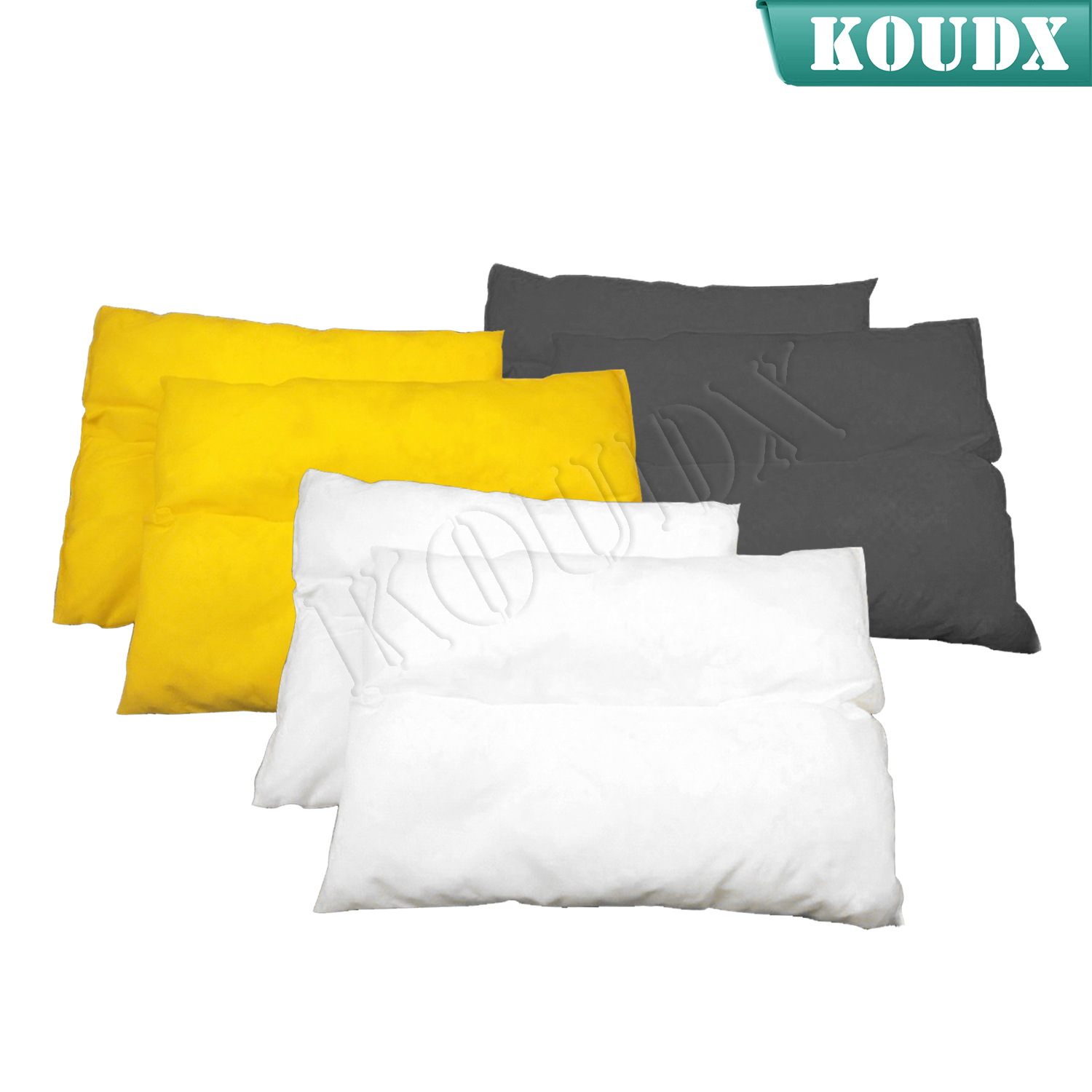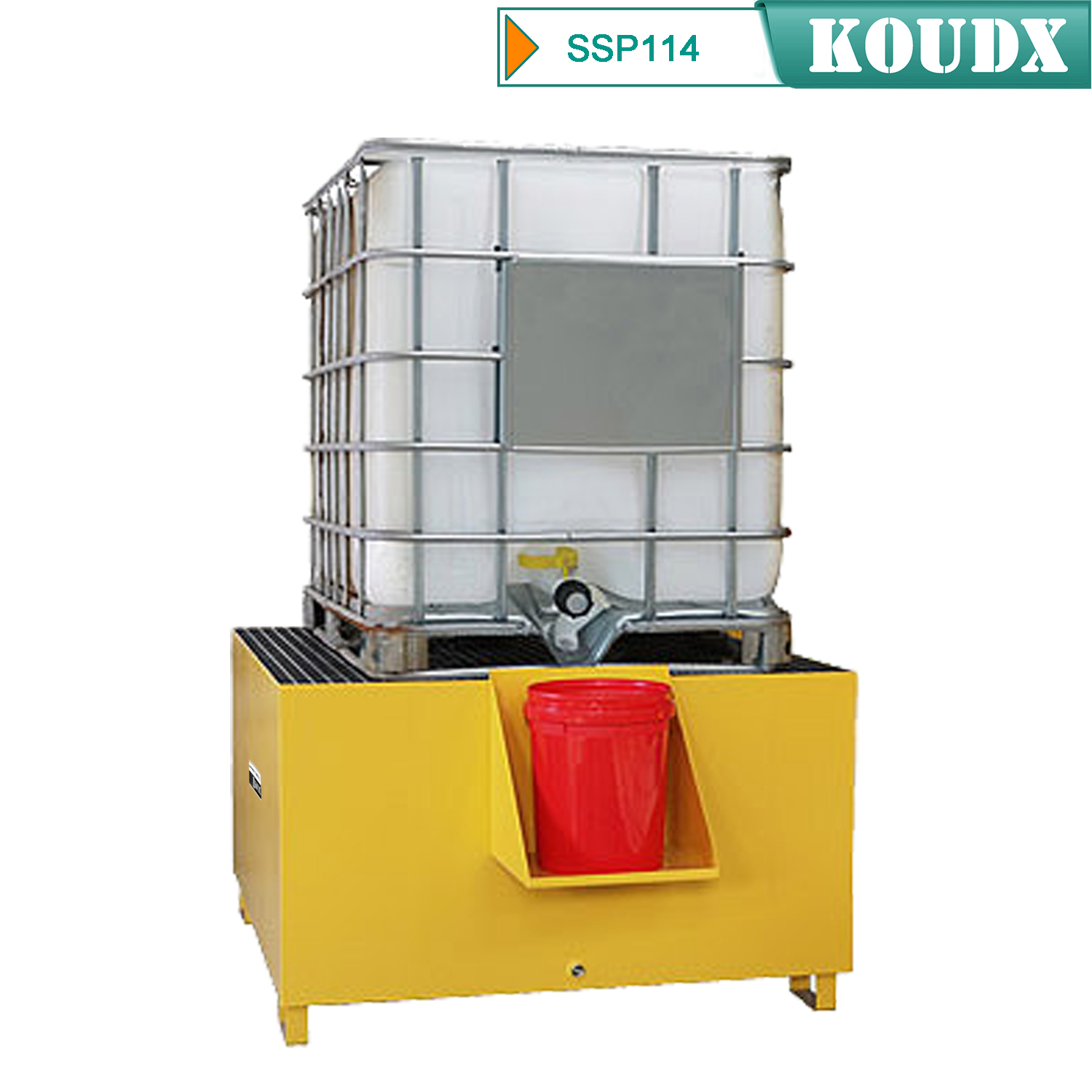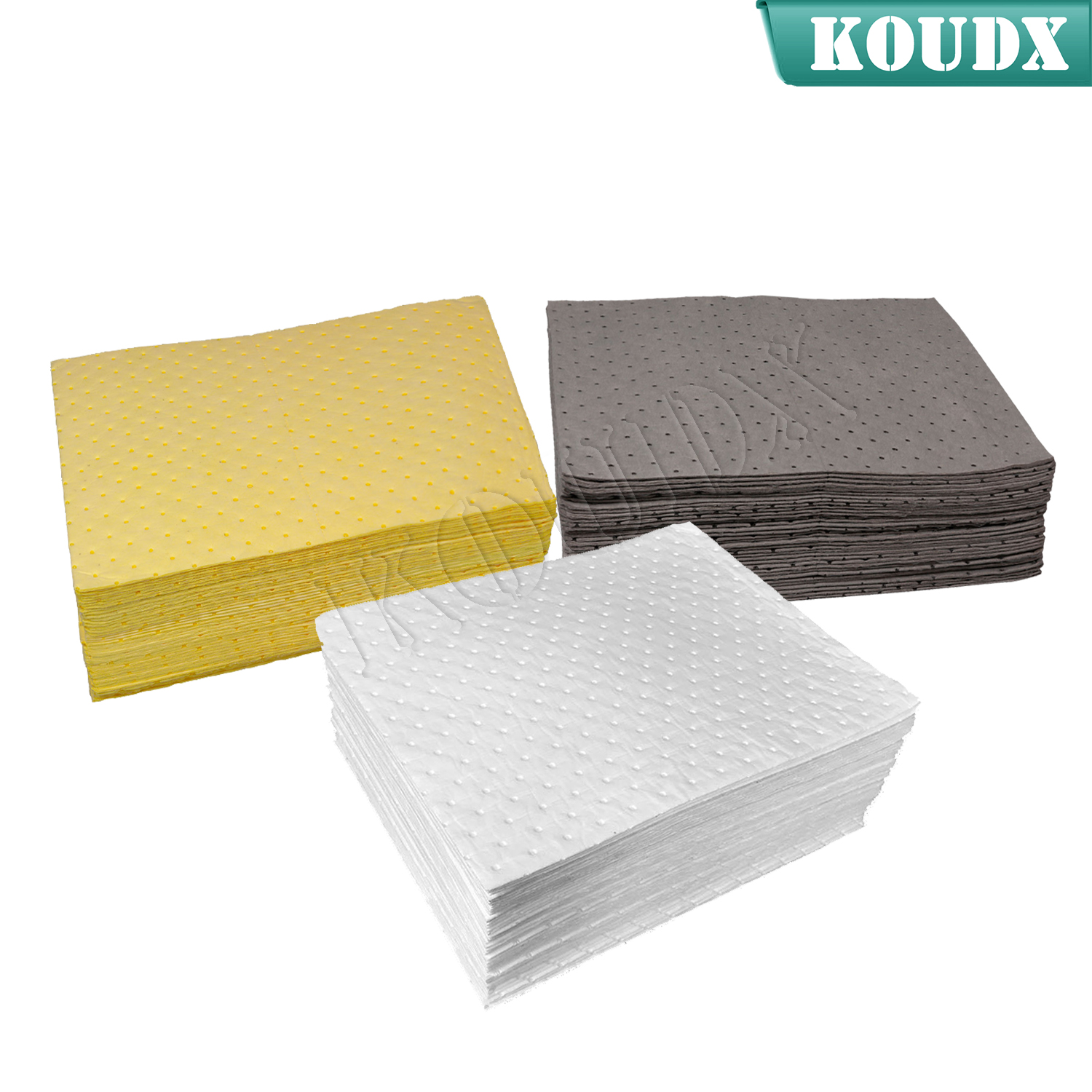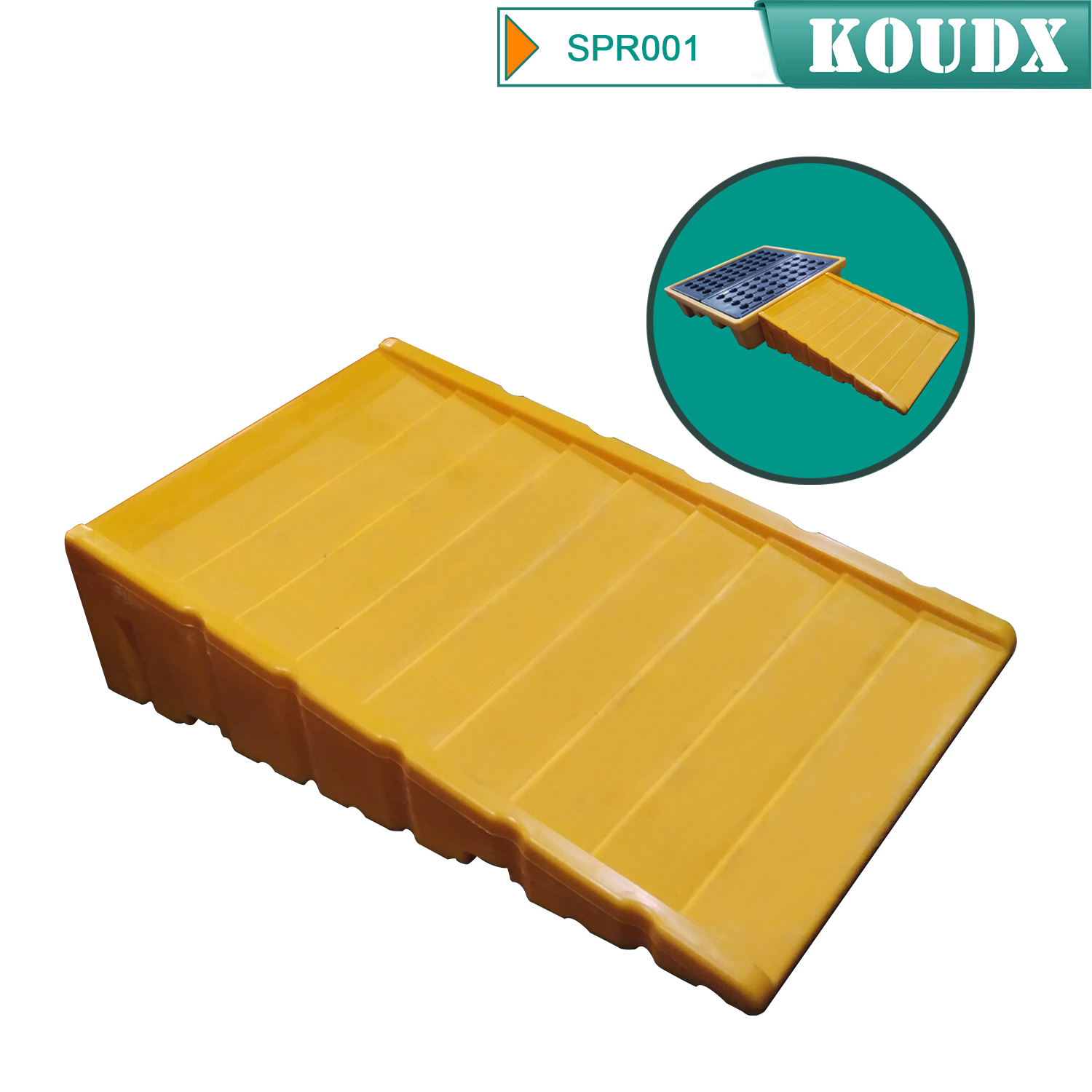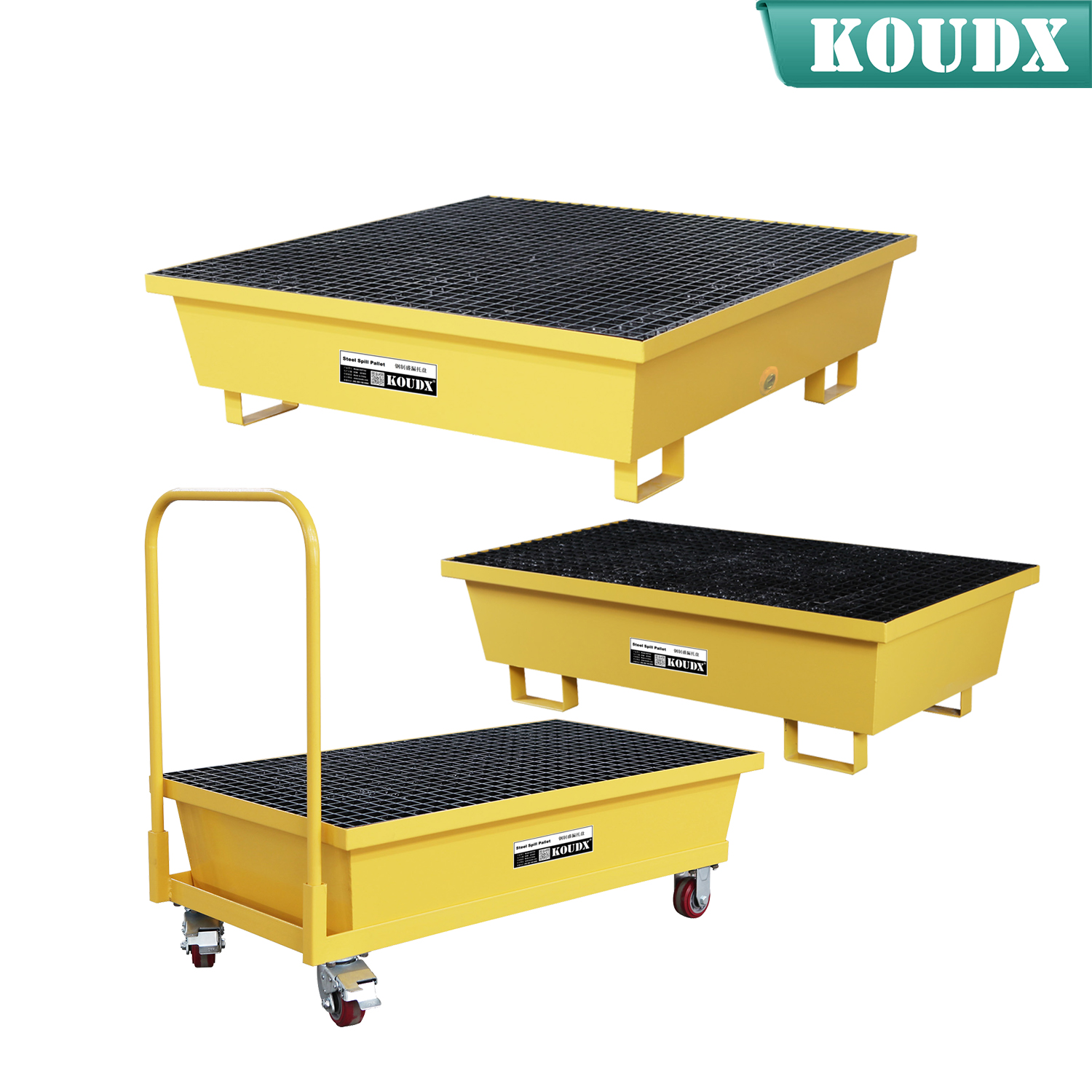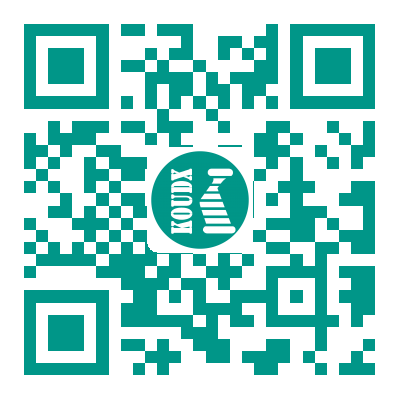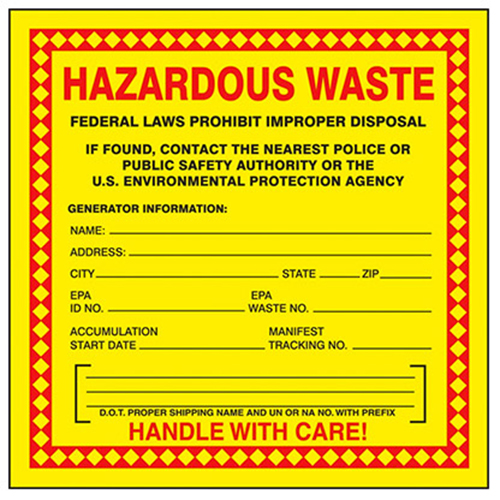
A critical step in the safe handling of hazardous waste is labeling and marking all containers appropriately. To help ensure uniformity in the labeling and marking of containers used for hazardous waste, both the U.S. Department of Transportation (DOT) and U.S. Environmental Protection Agency (EPA) offer specific regulatory guidance for hazardous waste generators to follow. It is important to note that these requirements are different from the Occupational Safety and Health Administration (OSHA) Hazard Communication Standard, 29 Code of Federal Regulations (CFR) 1910.1200, which offers labeling guidance for hazardous materials that have not been
designated as waste.
DOT Bulk vs. Non-Bulk Packaging
The DOT hazardous waste labeling and marking requirements are different based
on the size of the container. Per 49 CFR 171.8, packaging means a receptacle and
any other components or materials necessary for the receptacle to perform
its containment function.
Non-Bulk Packaging
Non-bulk packaging is defined as packaging that has:
-
A maximum capacity of 450L (119 gal.) or less as a receptacle for a liquid
-
A maximum net mass of 400kg (882 lbs.) or less and a maximum capacity of 450L (119 gal.) or less as a receptacle for a solid
-
A water capacity of 454kg (1000 lbs.) or less as a receptacle for a gas as defined in 49 CFR 173.115
Bulk Packages
Under 49 CFR 171.8, a bulk package is defined as a packaging, other than a vessel or a barge, including a transport vehicle or freight container, in which hazardous materials are loaded with no intermediate form of containment. Bulk packaging is also defined as large packaging in which hazardous materials are loaded with an intermediate form of containment, such as one or more articles or inner packagings. Additionally, a bulk package has:
-
A maximum capacity greater than 450L (119 gal.) as a receptacle for a liquid
-
A maximum net mass greater than 400kg (882 lbs.) and a maximum capacity greater than 450L (119 gal.) as a receptacle for a solid
-
A water capacity greater than 454kg (1000 lbs.) as a receptacle for a gas as defined in 49 CFR 173.115
While the DOT guidelines for properly labeling and marking non-bulk and bulk containers
are similar, they are not the same. This document outlines the rules for
non-bulk packaging.
Hazardous Waste Labeling vs. Marking
The DOT reference to a label is very specific. Labels are the diamond-shaped labels placed on non-bulk containers and resemble bulk container placards. Everything else on a non-bulk package is a marking.
Hazardous Waste Labeling
The design and size of labels are based on international standards and are used to identify the hazards within the container. Each diamond (square-on-point) label measures at least 100mm (4" x 4") on each side as prescribed in 49 CFR 172.407(c)(1).
DOT Hazardous Waste Label Examples:
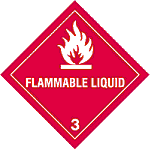 |
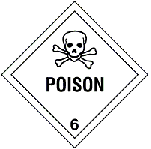 |
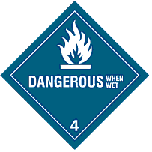 |
Placement of Hazardous Waste Labels
The proper placement of labels is important. Labels must be printed on or affixed to a surface (other than the bottom) of the package and located on the same surface of the package and near the markings, if the package dimensions are adequate.
Multiple Hazardous Waste Labels
When primary and subsidiary hazard labels are required, they must be displayed next to each other. The DOT recommends a six-inch space (150mm) between labels.
Hazardous Waste Labels and Overpacking
Whenever hazardous material packages are overpacked, the inner containers must be properly labeled in accordance with DOT shipping requirements for the hazardous material. The same applies to the overpack container.
Hazardous Waste Markings
Marking is a critical process in preparing hazardous materials for transportation. A marking on a hazardous materials package contains important information about the identification and dangers posed by the hazardous material. While there is no standardized hazardous waste marking format, both the DOT and EPA have
specific requirements.
According to 49 CFR 172.304 markings must:
-
Be durable
-
Be in English
-
Be printed on or affixed on the package surface or on a label, tag or sign
-
Be displayed on a contrasting color background
-
Not be obscured or covered up by other labels or attachments
-
Not be located next to any other markings (such as advertisement) that would limit
their effectiveness
Hazardous Waste Markings and Overpacking
Whenever hazardous material packages are overpacked, the inner containers and the overpack container must be properly marked in accordance with DOT shipping requirements for the hazardous material.
DOT Hazardous Waste Marking Requirements
49 CFR 172.301 identifies the general DOT marking requirements for a
non-bulk package:
-
Proper shipping name and identification number
-
Technical names (if required)
-
Special permit number
-
Consignor’s or consignee’s name and address
-
NON-ODORIZED marking on cylinders containing liquefied
petroleum gas (LPG) (if required)
Other DOT Non-Bulk Package Markings
Along with the hazardous waste marking requirements, there may be additional markings that are required. For example:
This End Up Marking
This marking is the package-orientation marking. It is applied to any package that holds inner containers of liquid hazardous materials. Inner packaging may be non-specification containers made of glass or earthenware, plastic or metal.
All packages having inner packages containing liquid hazardous materials must be packed with their closures upward and legibly marked with package-orientation arrows on two opposite vertical sides and with the arrows pointing in the correct upright direction. Arrows for purposes other than indicating proper package orientation may not be displayed on a package containing a liquid hazardous material.
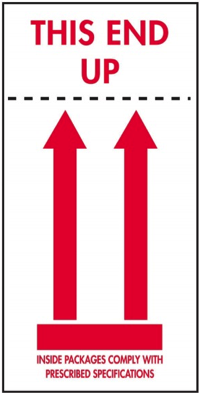
EPA Hazardous Waste Marking Requirements
The EPA, under 40 CFR 262.32, requires certain information to be marked on containers of 119 gal. or less used in transportation. This information is listed below:
-
Hazardous Waste Warning Statement
The following statement must be included on non-bulk packages: HAZARDOUS WASTE: Federal Law Prohibits Improper Disposal. If found, contact the nearest police or public safety authority or the U.S. Environmental Protection Agency. -
Generator’s Name and Address
This is the same as the consignor’s address. -
Generator’s EPA Identification Number
This is a 12-digit number assigned by the EPA to each hazardous waste generator. It is also included on the hazardous waste manifest. -
Manifest Tracking Number
This tracking number must consist of a unique three-letter suffix following nine digits. It is unique for each shipment.
Accumulation Start Date
This date is determined by the generator. It is the date that the generator first placed a hazardous waste inside the package. As addressed in 40 CFR 262.34, there are time limits related to the amount of time a generator can accumulate hazardous waste at its site. Consequently, this date is very important.
EPA Waste Number
In order for a hazardous material to be classified as a waste, it must carry an EPA waste number. Waste numbers provide more information regarding the specific hazards associated with the waste. For more information on identifying the proper waste number, refer to 40 CFR 261.
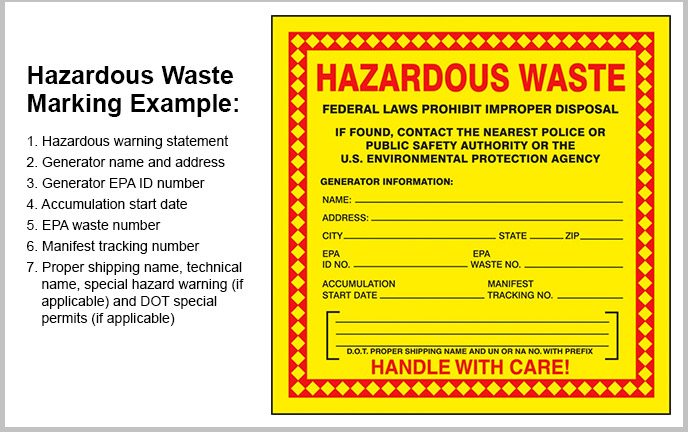
In addition to the federal marking requirements, there may also be state or local requirements that apply. Contact your state EPA officials to find out if there are any additional requirements that you need to meet.
Commonly Asked Question
Q. How do you go about obtaining an EPA Identification Number?
A. Federal regulations require large and small quantity generators of hazardous waste to obtain an EPA Identification (EPA ID) number using EPA Form 8700-12 and to submit the completed form to the authorized state agency or EPA regional office if the state is not authorized to implement the Resource Conservation and Recovery Act Subtitle C program. The Site Identification Form (EPA Form 8700-12) includes information such as:
• Facility’s name and address,
• Contact information, and
• A description of hazardous waste activities conducted at the site
KOUDX(Shanghai Koudx Industry Technology Co., Ltd.) is a professional provider of industrial safety and environmental protection solutions. Based on the concept of market and customer demand, our fire safety cabinet was developed in accordance with the standards of OSHA 29 CER 1910.106 and NFPA CODE30. It is widely used in petrochemical industry, industrial manufacturing, university laboratories, food industry, automobile industry manufacturing, new energy and other industries.
We sincerely hope that in the journey of KOUDX's continuous development and expansion, we will be able to get the full support of our distributor partners in China and abroad, and have more long-term strategic partners, development together and achieve a win-win situation. Welcome to contact us (86) 400-168-8090, you can visit our website www.koudx.com for the detail information.



